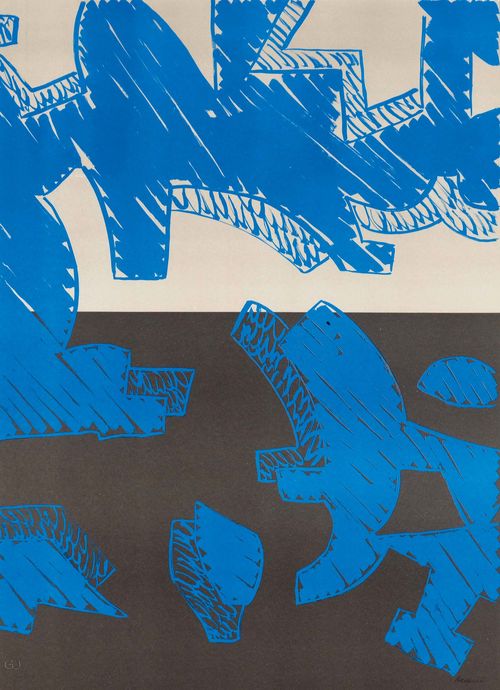ACCARDI, CARLA
The Italian painter Carla Accardi was one of the most original female artists in Italy after the Second World War, and her work from 1947 onwards contributed considerably to the establishment of the Italian avant-garde. She set the tone for the Informel and Arte Povera movements of the late 1960s and at the same time was a co-founder of the formalist and Marxist-inspired artists’ group Forma 1.
Accardi was born in Trapani, Sicily in 1924. After completing her education at the Liceo Ximenes in Trapani, she moved to Palermo to study at the Academy of Fine Arts, where she graduated in 1947. After moving to Rome, she would frequent Osteria Fratelli Menghi, which between the 1940s and 1970s was a well-known meeting place for painters, directors, screenwriters, writers, and poets. She was also a regular visitor to Pietro Consagra’s studio, where she met like-minded artists. In the same year, she, together with Attardi, Consagra, Dorazio, Guerrini, Concetto Maugeri, Perilli, Sanfilippo (whom she married in 1949) and Turcato, with herself as the only woman, launched the group Forma 1, which defined itself as dedicated to Futurism and Marxism as a reaction to the oppression of the Fascist regime in Italy. Up to 1949 she exhibited together with the group. 1950 saw her first solo show at the Libreria Age d’Or in Rome. Accardi’s early work of the 1950s was dominated by circles and signs and shows some similarities to Pollock’s drip paintings. During a stay in Paris, she became acquainted with the work of Alberto Magnelli and began to explore questions of colour and sign reduction. The black and white works of the 1960s can be traced back to Magnelli, as well as Hans Hartung’s static and energetic works. “It was a crisis year, I was very demotivated and thought I could not paint any more. In my isolation I began to paint directly on the floor, to trace characters. But I used white on black because black on white was not exciting, because it was too obvious…”, Accardi said.
In the mid-60s Accardi’s work underwent a radical transformation, in that she gave up tempera in favour of fluorescent colours, which she applied to Sicofoil, a transparent plastic. From then onwards intense, fluorescent colours and calligraphic forms would dominate the picture surface. These new materials were also used sculpturally, as in Tenda, a tent composed of plastic strips, covered with patterns of colourful brushstrokes. This phase of Accardi’s work was celebrated at the Biennale in 1976 and had a lasting influence on Arte Povera. In the late 1970s she joined the feminist movement together with the critic Carla Lonzi. Together in 1970 they founded Rivolta femminile, one of the first feminist groups and publishing houses in Italy. From 1980 she returned to work on canvas and a traditional painterly structure. Her works are exhibited at the Musée d’Art Moderne de la Ville de Paris, PS1 Contemporary Art Center in New York and Rivoli Museum in Turin, amongst other venues. Accardi died in 2014 in Rome.
Quelques exemples d'œuvres de cet artiste
Vous trouverez ci-dessous quelques exemples d'œuvres de cet artiste provenant de nos ventes aux enchères passées et futures.
Nous acceptons à tout moment les consignations pour nos ventes aux enchères. Participez à notre succès - contactez-nous pour une estimation gratuite et confidentielle.
office@kollerauktionen.chCARLA ACCARDI
CHF 600 / 700 | (€ 620 / 720)
Vendu pour CHF 720 (frais inclus)
Aucune responsabilité n'est prise quant à l´exactitude de ces informations.
Détails Mon catalogue Questions
CARLA ACCARDI
CHF 600 / 700 | (€ 620 / 720)
Vendu pour CHF 720 (frais inclus)
Aucune responsabilité n'est prise quant à l´exactitude de ces informations.
Détails Mon catalogue Questions


